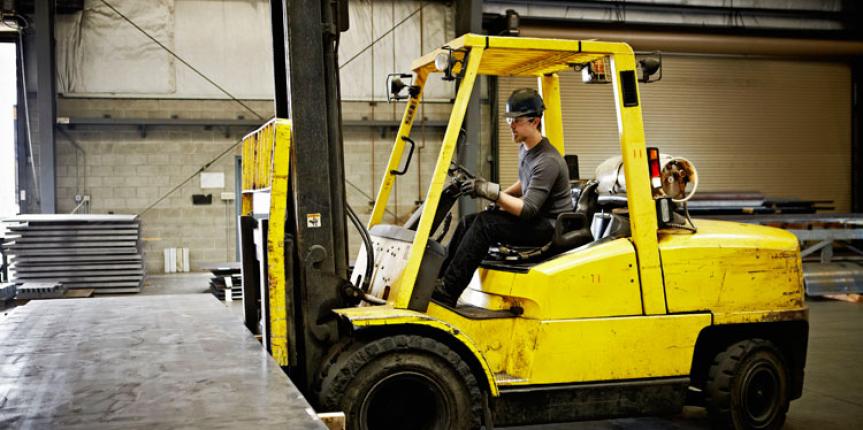
Before discussing the important forklift associated safety hazards, let us see what exactly a forklift, why it is used in construction, is and different forklift hazards.
What is a Forklift?
A forklift is an industrial machine used in lifting heavy loads. It has a pronged device, an essential part of the machine, and performs all the lifting and carrying of loads. The original tow motor machine did not have any forks in the front and was used to push and pull goods from one place to another.
Why do we need to use a Forklift Control Measures?
- Forklift ensures smooth transportation of goods.
- It can lift very heavy loads, which are impossible for a human to lift and carry around.
- It saves time and energy.
What are the common Forklift Dangers?
Some of the common Forklift dangers are-
- Overloading and improper use of its attachments can result in falling over.
- Hazardous to the pedestrians as they can get hit if the forklift is moving at high speed.
To avoid any mis happening while using a fork lift or tow motor, we must discuss the important forklift and tow motor safety hazards.
6 Important Potential Forklift Safety Hazards
Here are some of the top six important potential safety hazards are-
1. Attachments
Improper use of attachments can result in many forklift hazards. Various attachments such as rotators, carton clamps, lifters, etc., can affect the truck’s capacity to lift and carry. This is because attachments themselves are heavy and can affect the truck’s stability.
To avoid any attachment-related hazards, make sure that –
• High maintenance of the attachments
• Regular examination of operating controls such as steering wheel and brakes
• Using the appropriate attachment for the right job
• Taking a ‘Forklift Hazard Assessment Test’ to spot any potential risks in the forklift
• Regular inspection of the attachments for any potential threats
2. Speed
Improper driving and speeding up can result in a bunch of dangers. Reckless driving can result in hitting pedestrians and other machines in the surroundings. Do you know what the most common type of lift truck accident is? It is forklift overturns. Overturns result from driving with too much load and unstable driving while turning.
The precautions one must follow in these cases are:
• Being aware of the surroundings
• Operating the machine at an appropriate speed, especially when making sharp turns
• Maintain a safe distance with the machines and other objects in the surroundings
• Designing a special route for forklifting to avoid collision with pedestrians.
3. Floor Conditions
Appropriate floor conditions are necessary for easy and smooth driving of these machines. Uneven, rough, and slippery grounds can result in accidents like falling over and slipping.
To avoid these situations:
• Inspect the floor regularly- check for any pits or puddles.
• Check for any water or oil leak to prevent slipping.
• Do not forget to put up “Caution Sign” wherever necessary.
4. Loads
Knowing your forklift and the capacity of load it can carry is very important. It is important to calculate the average load your forklift can carry as attachments have their weight while using any attachments.
While lifting loads, keep the following things in mind:
• Securing and stabilizing your loads to prevent falling
• Staying super alert while carrying any hazardous material. Any spillage of hazardous materials can be fatal for the whole work zone.
• Ensuring that you are not overloading your forklift
5. Fuelling
As we know that fuels like petrol and diesel are highly inflammable, it is of utmost importance to be cautious while using them. Any negligence can be fatal. To avoid these dangerous incidents:
• Never smoke near a refuelling or toxic fumes area.
• Good ventilation is necessary.
• Keep a check on the leaking of any oils, gases, and toxic radiations.
6. Blind Spots
Blind spots are the area where our view is blocked and weak. It is very difficult to determine the distance and space between the vehicle and the surroundings in these spots. It results in a collision of machines and a collision with pedestrians. Accidents can be avoided by:
• Properly lighting the area to increase visibility.
• Following a specific route to avoid collisions
• Mapping down different paths for pedestrian and forklifts to avoid hitting anyone on the way
